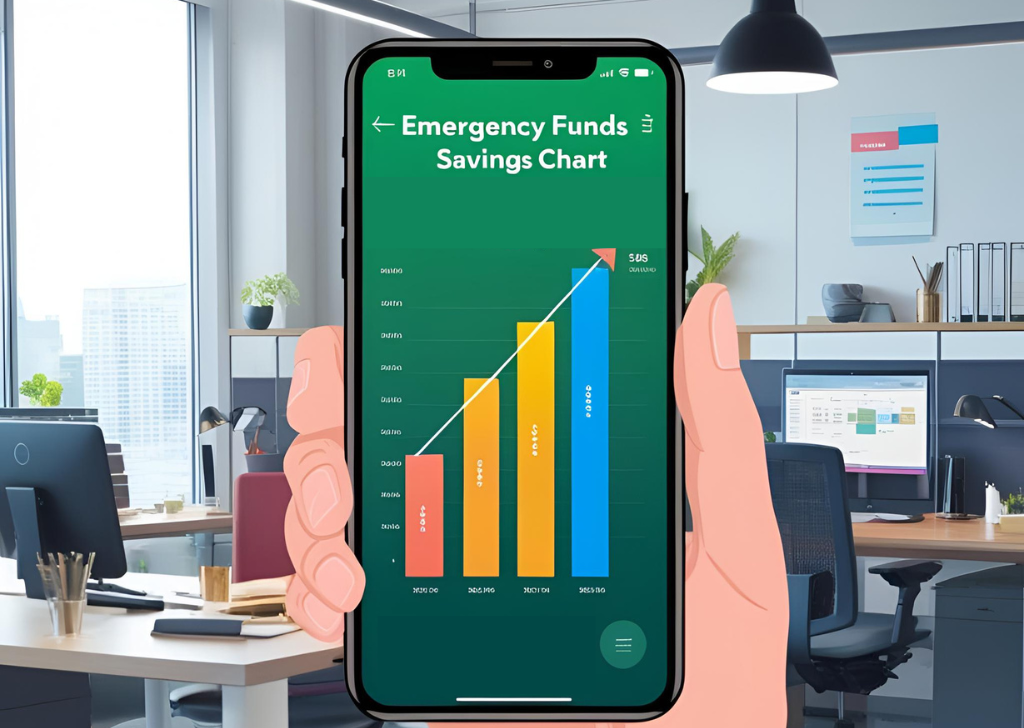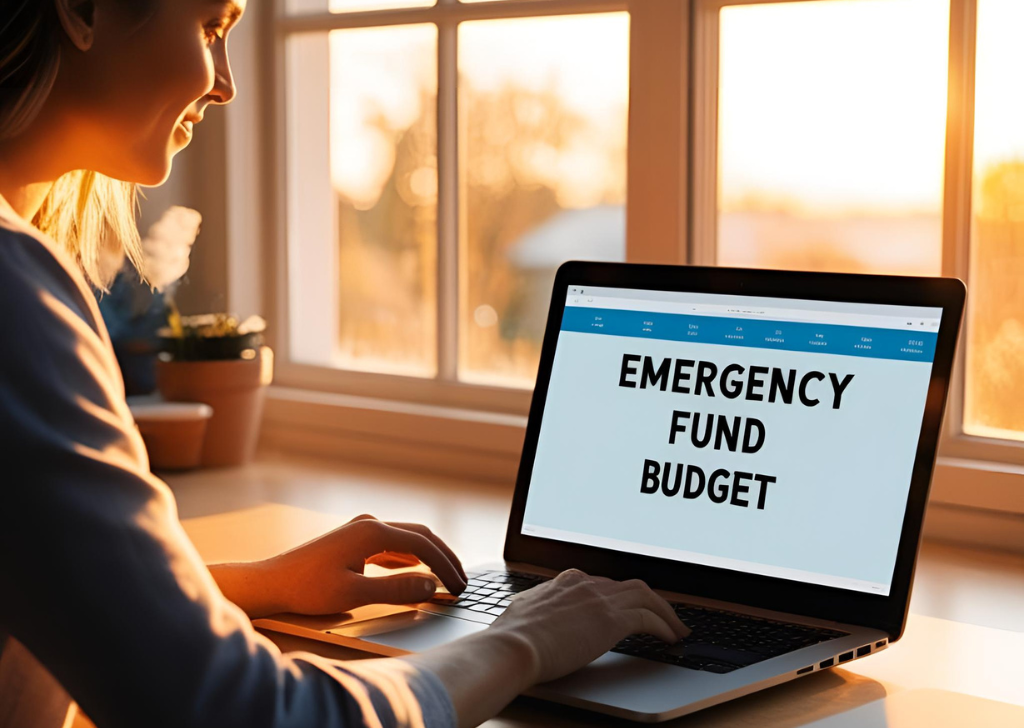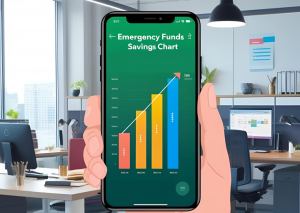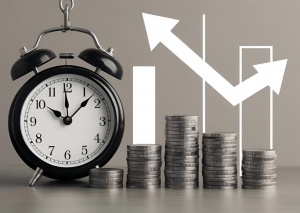Creating an emergency fund is an essential part of keeping your finances secure and stable. Having a sizeable emergency fund is crucial for both financial stability and peace of mind in this volatile world. Crises such as the pandemic or economic decline are rather unpredictable, which lessens the job security of an individual. So, it is the emergency fund that comes in handy during those times. Putting money aside for unforeseen costs or financial emergencies is known as an emergency fund strategy. As a safety net, an emergency fund offers a financial buffer in case of unforeseen circumstances such as unanticipated medical bills, auto repairs, or abrupt job loss. Selecting the appropriate account, figuring out how much to save, and making a contribution plan are all part of it. Investigating many approaches is essential to accumulating an emergency fund, from side projects and budget modifications to prudently handling windfalls.
Laying the Groundwork: Planning and Saving
Establish clear financial objectives, calculate the required emergency reserve, make a budget, and look for possible funding sources to accomplish this. Debt and financial commitments, health and insurance coverage, employment stability and income sources, lifestyle and living expenses, and other factors should all be taken into account while creating an emergency fund.
- Sustain an emergency fund by periodically reviewing and reevaluating it and making necessary adjustments to reflect changes in your goals, spending, or financial status. Set goals for debt repayment and search for ways to reduce ongoing costs, like utilities or insurance premiums, to maximize savings and decrease expenditures.
- To guarantee that your emergency fund is available when you need it and that it is collecting interest, keep it in a safe, easily accessible account, like a money market account or high-yield savings account. Reverse mortgage lines of credit, retirement savings accounts, and personal loans and credit cards are substitutes for an emergency fund. Even though these options might be short-term, they are risky and could have long-term effects on your retirement funds, including taxes and fines.
Building Consistency and Motivation
The key to creating an emergency fund is regularity. Setting up direct payments or automatic transfers from your checking account to your emergency fund savings account will allow you to contribute regularly without feeling overburdened. Establishing automatic transfers from your principal checking account to your emergency savings account guarantees regular contributions without requiring human involvement. This approach promotes an organized saving habit and eliminates the temptation to squander the funds designated for emergencies. Establish fixed payment amounts, such as those from your paycheck, weekly or daily, and progressively raise them as your financial circumstances improve. Make judicious use of unforeseen windfalls to your emergency fund, such as incentives, tax refunds, or endowments.

Establish attainable savings targets to accumulate three to six months’ worth of living expenditures. If saving for several months seems stressful, start small and work your way up. Use visual tools to monitor your progress, such as an app or savings chart, and evaluate them frequently to keep on course and make any necessary corrections if required. Prioritize saving by making it a part of your monthly budget, minimizing unnecessary expenditures, and remaining motivated. Celebrate your accomplishments to stay motivated, and put your emergency savings in a different account to avoid distractions.
Reassessing and Rebuilding as Needed
To make sure your emergency fund is successful, you must keep it up to date and keep adding to it. Important actions include replenishing lost money, temporarily raising donations until the fund reaches your desired level, and, if necessary, evaluating and modifying your objectives. Even after you’ve achieved your initial goal, continue saving to take inflation and changes in your lifestyle into consideration. With the aid of a debt relief program, you can lessen your debt load and increase your disposable income. Reduced stress, smaller monthly payments, and access to expert advice from financial experts who may assist in developing a thorough plan for debt management and saving are all advantages of a debt relief program. You may create an emergency fund that is both efficient and controllable by using these techniques.
Emergency Funds vs. Alternative Options
You can optimize the growth of the emergency fund over time by investing a portion of it in possibly higher-yielding ventures. To protect capital while still generating some profits, take into account low-risk options such as government bonds or diversified index funds. These investment vehicles can help fight inflation and have moderate growth potential. Finding a balance between accessibility and danger is vital, though. Steer clear of illiquid investments because liquidity is crucial for an emergency fund. The fund’s core goal of ensuring financial security in unexpected occurrences should always come before investment results.
To replenish your emergency fund, go over your budget and find places where you may make short-term concessions to increase your finances. Adapt your monthly contributions to your new savings objectives. Make bigger contributions to your fund by allocating windfalls and additional income, such as bonuses or tax refunds. To speed up the restoration of your funds, take into account supplementary revenue sources like part-time employment or freelancing. You may restore your financial stability and improve your readiness for unforeseen circumstances by staying dedicated to growing your fund.
Beyond the Emergency Fund
An emergency fund is a significant financial instrument, but for complete coverage, other choices must be taken into account. Personal lines of credit, which offer a fixed credit limit at reduced interest rates, can serve as a safety net in times of need. Low-interest credit cards can save interest costs while offering short-term respite. In the event of unforeseen circumstances, insurance coverage like health and life insurance can offer financial security. To be sure you have sufficient protection, examine your coverage. In times of crisis, social safety nets like local resources or government initiatives can also be helpful. These options should be viewed as additional methods to increase financial security rather than as a replacement for the necessity of an emergency fund.

Final Thoughts on Financial Readiness
Finally, establishing an emergency fund is critical to preserving financial security and stability. Establish clear financial objectives, calculate the required emergency reserve, make a budget, and look for possible funding sources to accomplish this. A well-rounded emergency fund can help you keep focused on your financial objectives in an emergency by taking into account variables like monetary obligations, lifestyle, job security, medical insurance coverage, and more.





